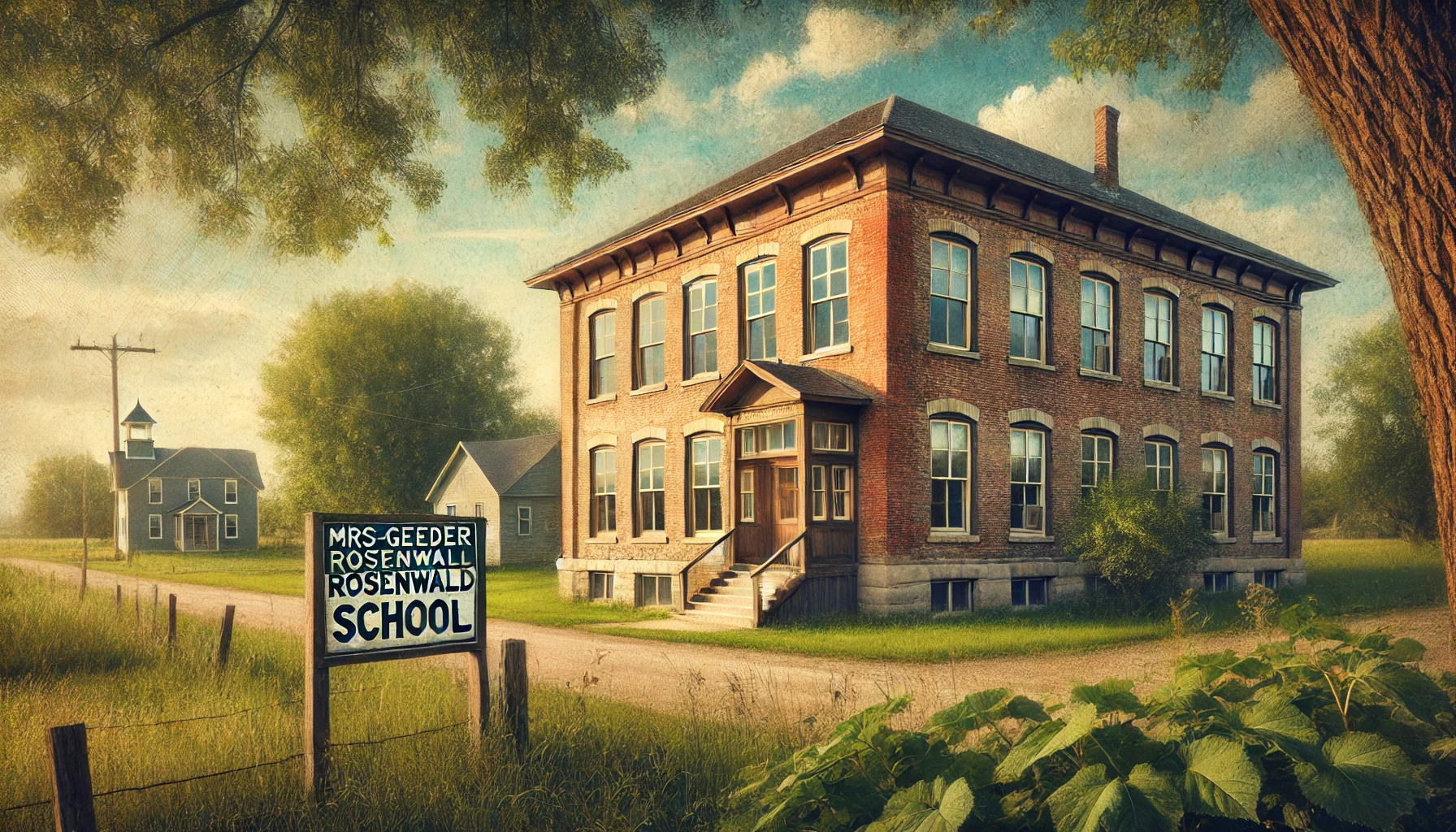Rosenwald Schools stand as a remarkable chapter in American history, a time when communities came together to create educational opportunities despite significant obstacles. One such school, the Mrs. Geeder Rosenwald School, is an inspiring example of this effort. This post will explore the history, significance, and legacy of Mrs. Geeder Rosenwald School and the broader impact of Rosenwald Schools across the United States.
What Were the Rosenwald Schools?
Before diving into the specifics of Mrs. Geeder’s school, let’s first understand what made the Rosenwald Schools such a big deal (and spoiler alert: they were a very big deal).
Rosenwald Schools were born out of a collaboration between Booker T. Washington, a prominent African American educator, and Julius Rosenwald, the then-president of Sears, Roebuck, and Company. Together, they aimed to address the stark educational disparities for African American children in the segregated South. With funds provided by Rosenwald and matched by local communities, over 5,000 schools, vocational workshops, and teacher homes were built between 1912 and 1932.
These schools were more than just buildings; they represented hope, resilience, and a commitment to progress. By providing access to quality education, Rosenwald Schools played a crucial role in improving literacy rates and empowering generations of African Americans. Mrs. Geeder Rosenwald School is one such institution, serving as a symbol of the transformative power of education.
The Story Behind Mrs. Geeder Rosenwald School
So, who exactly was Mrs. Geeder, and why was this school named after her? Mrs. Geeder was a prominent local figure whose dedication to education and community building made her a driving force behind the establishment of the school. Her tireless advocacy for educational access in her community led to the school’s founding in the early 1920s.
The Mrs. Geeder Rosenwald School was more than just a place for learning; it was a cultural hub where the local African American community could gather, exchange ideas, and work toward a brighter future. Built with the classic Rosenwald design in mind—think large windows for natural light and adaptable classroom spaces—the school was a model of both practicality and aspiration.
Notably, the school’s architecture followed the “Rosenwald Plan,” which aimed to ensure that all students had a comfortable and conducive learning environment. While modern classrooms boast the latest tech, the well-thought-out design of Rosenwald Schools like Mrs. Geeder’s was ahead of its time.
Impact on the Local Community
The Mrs. Geeder Rosenwald School wasn’t just about reading, writing, and arithmetic—it was about changing lives. It played a vital role in improving literacy rates in the community, giving children access to an education that their parents and grandparents may have only dreamed of. At a time when educational opportunities for African Americans were scarce and underfunded, schools like Mrs. Geeder’s were lifelines for families who wanted their children to have better opportunities.
The school also functioned as a social and cultural center. It hosted events, meetings, and even performances that united the community. Extracurricular activities, like music and sports, enriched students’ lives, giving them a sense of belonging and an outlet for their talents. For many, it was a place to make lifelong friends, discover new passions, and gain a sense of pride in their heritage.
Former students have shared stories of teachers who went above and beyond, sometimes using their own resources to provide supplies or staying late to tutor struggling students. These dedicated educators left a lasting impression, helping shape the futures of countless children. Clearly, the impact of the Mrs. Geeder Rosenwald School extended far beyond the classroom walls.
Decline and Preservation Efforts
Like many Rosenwald Schools, the Mrs. Geeder Rosenwald School eventually faced decline. With the rise of integration and the end of racial segregation in public schools, Rosenwald Schools began to close. Many of these historical buildings fell into disrepair, some even demolished without recognition of their significance. Mrs. Geeder’s school was no exception and saw a period of neglect, leaving the once-bustling educational center a shadow of its former self.
But the story doesn’t end there. Efforts to preserve the Mrs. Geeder Rosenwald School emerged, driven by local historians, alumni, and preservation organizations. Recognizing the cultural and educational significance of these structures, grants and community fundraising efforts have been used to restore and maintain them. Organizations like the National Trust for Historic Preservation have championed the cause, advocating for these schools to be recognized as important pieces of American history.
Restoration efforts often focus on returning these schools to their original designs while modernizing aspects for safety and usability. Today, some former Rosenwald Schools, including Mrs. Geeder’s, serve as museums, community centers, or even educational facilities once again, reminding us of their enduring legacy.
The Legacy of Rosenwald Schools Today
Even though the days of Rosenwald Schools serving as primary educational institutions are over, their legacy continues to resonate. They laid the groundwork for educational reform and demonstrated the power of community-driven solutions. Programs and organizations dedicated to educational equity today often draw inspiration from the Rosenwald model.
Rosenwald Schools have also made their way into pop culture, documentaries, and exhibitions. Their stories highlight the importance of overcoming adversity and ensuring that every child has access to quality education, regardless of background. The Mrs. Geeder Rosenwald School, in particular, stands as a testament to how much can be achieved when communities come together with a common purpose.
Commemorations and historical markers now dot the landscapes where these schools once operated. Preservation efforts have not only saved these structures from decay but have also sparked meaningful conversations about the history of education in the United States.
Why Mrs. Geeder Rosenwald School Matters Today
The Mrs. Geeder Rosenwald School may have served its last class long ago, but its legacy is more relevant than ever. In a time when conversations about educational equity and historical preservation are front and center, the story of Mrs. Geeder’s school offers valuable lessons. It reminds us that community-led initiatives can create lasting change, even in the face of systemic obstacles.
The history of Rosenwald Schools emphasizes that access to quality education is a powerful tool for social progress. As discussions about educational disparities and resource allocation continue, the Mrs. Geeder Rosenwald School serves as a historical touchstone, showing us the power of collective action in shaping a better future.
Conclusion
The Mrs. Geeder Rosenwald School represents a rich history of perseverance, community, and the unyielding quest for knowledge. From its establishment as a beacon of hope in a segregated society to its present status as a symbol of resilience, Mrs. Geeder’s school continues to inspire. Remembering its story encourages us to honor the past while striving to improve education for all.
So, let’s keep the conversation going! Visit a Rosenwald School, support preservation efforts, or simply share this story with others. After all, the legacy of the Mrs. Geeder Rosenwald School isn’t just about history—it’s about continuing the fight for educational opportunity and equality today.





